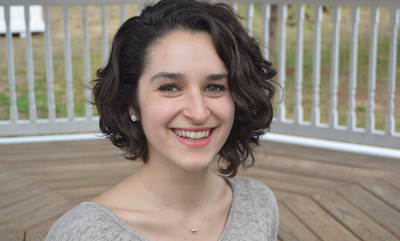Student Builds Toolkit to Prevent Infant Mortality.
 To understand how maternal and child health theories really work on the ground, student Avery Desrosiers took a bird’s-eye view.
To understand how maternal and child health theories really work on the ground, student Avery Desrosiers took a bird’s-eye view.
In her Maternal and Child Health Practice Fellowship at the National Institute for Children’s Health Quality (NICHQ), Desrosiers saw first-hand how public health workers innovate and discover what works.
“OK, we do a needs assessment, we do community organizing, building political will, advocacy,” she says, “but what drives the actual actions?” The answer, she found, is quality improvement, a formal way to analyze and improve performance by bringing together countless small successes, failures, and adjustments to create an always-changing idea of what works.
At NICHQ, Desrosiers helped build the Infant Mortality Collaborative Improvement and Innovation Network Toolkit—or the IM-CoIIN Toolkit for short.
The toolkit provides a one-stop resource to find case studies and other information from across the country to guide infant mortality reduction and health equity work, and to support state teams creating their own innovations.
“I had a light bulb moment,” says Desrosiers, whose year-long fellowship was supported by the Maternal & Child Health Center of Excellence at SPH.
“I’ve been able to take a maternal and child health mindset and see how it can be applied to a management position,” she says, “working with the state case study teams and finding out what are some of the innovations they’re working on, how have they been doing it, what are the lessons learned, what barriers they have overcome, how they have overcome those barriers, and putting that into a narrative that will really help guide other states’ practices.”
Desrosiers says her practicum has come with lessons that will be useful in her future work—she hopes to find a job with a similar approach—but also valuable for maternal and child health work at any level.
“Failing forward” to build knowledge, and using narratives to convey information and urge change, have been two of those lessons. She says her experience also drove home an idea at center of what she has learned at SPH: “The community members are the experts, and we as practitioners should do our best to connect them with resources and with existing materials and create new materials,” she says. “We’re there to help strategize but not to give them prepackaged solutions.”
The toolkit she has helped build, Desrosiers says, shows how those key ideas can be put into action, with a set of proven methods that are meant to change and improve in each context and each community.
Read Avery Desrosiers’ reflections on her work at NICHQ here.